Pillow Reviews
The right pillow is just as important as the right mattress. This page is the master index for every pillow I have tested. Use this list to find the perfect loft and feel for your sleep style.
Loft Analysis
I measure the actual compressed height of every pillow to see if it truly works for side or stomach sleepers.
Heat Retention
I test for heat buildup. Cooling pillows are checked to see if the "cool-to-touch" feel actually lasts all night.
Fill Quality
I tear them open. Whether it's solid latex, shredded memory foam, or down, I check the quality inside.
How to choose a pillow
- Check the Loft (Height): This keeps your neck aligned. Side sleepers need high loft; stomach sleepers need low.
- Know the Material: Memory foam contours (good for pain), while Latex bounces back (good for sex/moving).
- Adjustability: "Adjustable Loft" pillows are safer bets because you can add/remove fill to fit you perfectly.
- Trial Period: Pillows are personal. Look for brands with at least a 30-day return policy.
A good pillow should fill the gap between your ear and the mattress perfectly.
Browse all pillow reviews
Listed below are all the pillows currently in the Yawnder database.
-
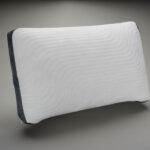 8Hours Adjustable Pillow: Stunning Comfort for Every SleeperUpdated Aug 2, 2025
8Hours Adjustable Pillow: Stunning Comfort for Every SleeperUpdated Aug 2, 2025Experience the game-changing comfort of the 8Hours Adjustable Pillow, crafted with innovative MemHex™ technology to perfectly adapt to your sleep style, ensuring a r…
-
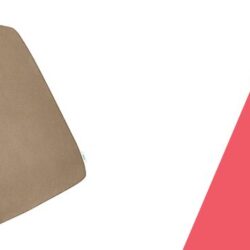 Acid Reflux Pillow: Must-Have for Effortless Sleep ReliefUpdated Aug 2, 2025
Acid Reflux Pillow: Must-Have for Effortless Sleep ReliefUpdated Aug 2, 2025Discover the ultimate comfort with the best acid reflux pillows, designed to elevate your nights and ease discomfort! Enjoy restful sleep again as these specially craf…
-
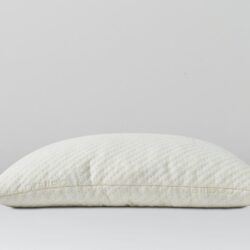 Aliso Pillow: Must-Have Comfort at an Affordable PriceUpdated Aug 1, 2025
Aliso Pillow: Must-Have Comfort at an Affordable PriceUpdated Aug 1, 2025Discover the incredible comfort of the Aliso Pillow from Brentwood Home—it's lightweight, versatile, and a steal at just $25! With its breathable bamboo cover and su…
-
 Angel Sleeper Pillow: Must-Have for Effortless SleepUpdated Aug 2, 2025
Angel Sleeper Pillow: Must-Have for Effortless SleepUpdated Aug 2, 2025Discover the comfort and support of the Copper Fit Angel Sleeper Pillow, expertly designed for side and back sleepers! Experience better sleep and reduced neck pain wi…
-
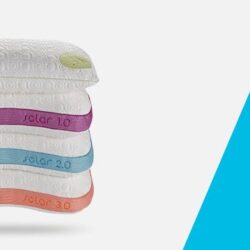 Bedgear Solar Pillow Review: Must-Have for Effortless SleepUpdated Aug 2, 2025
Bedgear Solar Pillow Review: Must-Have for Effortless SleepUpdated Aug 2, 2025Discover the Bedgear Solar Pillow, where cutting-edge design meets personalized comfort! With its dual firmness options and temperature-regulating fabric, this pillow …
-
 Best CPAP Pillows to reduce mask slippageUpdated Dec 19, 2025
Best CPAP Pillows to reduce mask slippageUpdated Dec 19, 2025Transform your sleep experience with the right CPAP pillow! Our guide highlights top-rated options to ensure comfort and support while you enjoy a restful night, makin…
-
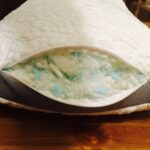 Best Memory Foam Pillows: The 5 Memory Foam Pillows You Need to Know AboutUpdated Jan 20, 2017
Best Memory Foam Pillows: The 5 Memory Foam Pillows You Need to Know AboutUpdated Jan 20, 2017If you’re looking for the best memory foam pillow, you have lots of choices. The list below breaks down the best memory foam pillow into categories. The first me…
-
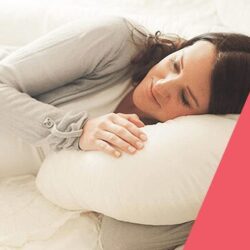 Body Pillow: Must-Have for Best Sleep Ever!Updated Aug 2, 2025
Body Pillow: Must-Have for Best Sleep Ever!Updated Aug 2, 2025Discover the secret to a better night's sleep with a body pillow—your new best friend for comfort and support! Say goodbye to aches and hello to restful nights, no m…
-
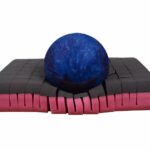 Cubes Pillow: The Must-Have for Effortless Sleep SupportUpdated Aug 2, 2025
Cubes Pillow: The Must-Have for Effortless Sleep SupportUpdated Aug 2, 2025Experience a revolutionary sleep with the Cubes Pillow, featuring a unique design of 70 interconnected cubes that offer ultimate support and comfort. With its dual-sid…
-
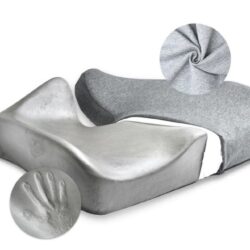 Cushion Lab Review 2025 — Are Their Pillows and Seat Cushions Worth It?Updated Nov 23, 2025
Cushion Lab Review 2025 — Are Their Pillows and Seat Cushions Worth It?Updated Nov 23, 2025Discover the ultimate comfort experience with Cushion Lab’s thoughtfully designed cushions, expertly crafted to embrace your body's curves and relieve pressure where…
-
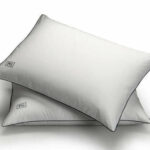 Down Pillow: Stunning Comfort for Effortless SleepUpdated Aug 2, 2025
Down Pillow: Stunning Comfort for Effortless SleepUpdated Aug 2, 2025Experience the unmatched luxury of the Pillow Guy Goose Down Pillow—crafted with 100% Certified RDS White Goose Down for ultimate comfort and support, it’s designe…
-
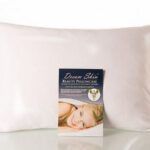 Dream Skin Pillowcase ReviewUpdated Jun 8, 2016
Dream Skin Pillowcase ReviewUpdated Jun 8, 2016Wouldn’t it be nice if you could reduce your wrinkles while sleeping? I have reviewed a pillow that will get rid of sleep wrinkles called the JuveRest Pillow an…
-
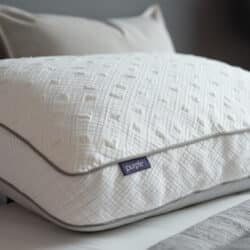 Dreamlayer Pillow by Purple: Top 3 Amazing Benefits 2024Updated Dec 19, 2025
Dreamlayer Pillow by Purple: Top 3 Amazing Benefits 2024Updated Dec 19, 2025Transform your sleep with the Dreamlayer Pillow by Purple, designed to offer personalized, cooling support that adapts to your unique needs. Say goodbye to restless ni…
-
 Dreampad: Must-Have Pillow for Effortless SleepUpdated Nov 23, 2025
Dreampad: Must-Have Pillow for Effortless SleepUpdated Nov 23, 2025Transform your sleep experience with the Dreampad Pillow! This innovative pillow uses gentle vibrations to deliver calming sounds, creating a serene environment that h…
-
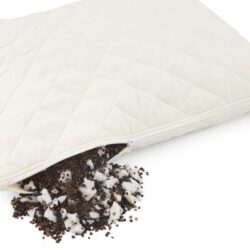 FitMe Pillow: Stunning Upgrade for Better Sleep ComfortUpdated Aug 2, 2025
FitMe Pillow: Stunning Upgrade for Better Sleep ComfortUpdated Aug 2, 2025Transform your sleep with the FitMe Pillow, the perfect blend of comforting foam and supportive buckwheat hulls that keeps your neck aligned and cool throughout the ni…
-
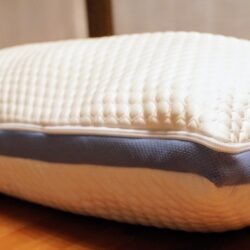 Helix Pillow Review: Must-Have for Effortless Sleep ComfortUpdated Aug 2, 2025
Helix Pillow Review: Must-Have for Effortless Sleep ComfortUpdated Aug 2, 2025Experience unmatched comfort with the Helix Pillow, featuring adjustable loft options and a cooling cover designed for hot sleepers! With a generous 100-night trial, y…
-
 HipPillowPlus: Discover the Best Sleep Solution Today!Updated Aug 3, 2025
HipPillowPlus: Discover the Best Sleep Solution Today!Updated Aug 3, 2025Transform your sleep experience with the HipPillowPlus Sleep System – an eco-friendly solution that cradles your body for ultimate comfort and support, ensuring you …
-
 Honeydew Sleep: Must-Have Pillows for Effortless ComfortUpdated Aug 2, 2025
Honeydew Sleep: Must-Have Pillows for Effortless ComfortUpdated Aug 2, 2025Transform your sleep with the Honeydew Scrumptious Side Pillow! Its unique curve cradles your neck and shoulders, providing plush support that soothes pain and ensures…
-
 I Love My Pillow: Must-Have for Effortless ComfortUpdated Aug 1, 2025
I Love My Pillow: Must-Have for Effortless ComfortUpdated Aug 1, 2025Discover why I Love Pillow has quickly become a favorite for those seeking comfort and support! With a wide range of materials and shapes, you're just a few clicks awa…
-
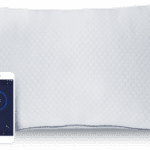 iSense Smart Pillow: Stunning Upgrade for Better SleepUpdated Aug 2, 2025
iSense Smart Pillow: Stunning Upgrade for Better SleepUpdated Aug 2, 2025Experience the future of sleep with the iSense Smart Pillow, where cutting-edge technology meets luxurious comfort for a night of restorative slumber. With adjustable …
-
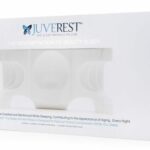 JuveRest Pillow Review: Must-Have for Effortless Sleep美Updated Jul 31, 2025
JuveRest Pillow Review: Must-Have for Effortless Sleep美Updated Jul 31, 2025I just got my hands on the JuveRest Pillow, designed by board-certified plastic surgeon Dr. Goesel Anson to help prevent pesky sleep wrinkles! I can’t wait to dive i…
-
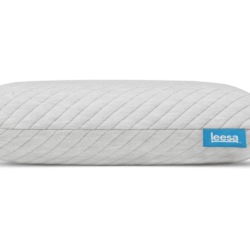 Leesa Pillow Review: Must-Have Comfort for Effortless SleepUpdated Aug 1, 2025
Leesa Pillow Review: Must-Have Comfort for Effortless SleepUpdated Aug 1, 2025Looking for the perfect pillow? The Leesa Pillow combines softness with support, making it a fantastic choice whether you have a Leesa mattress or just want a cozy upg…
-
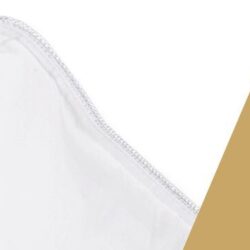 Luxe Pillow Review: Stunning Comfort for Effortless SleepUpdated Aug 2, 2025
Luxe Pillow Review: Stunning Comfort for Effortless SleepUpdated Aug 2, 2025Experience the ultimate in sleep luxury with the Luxe Pillow, featuring a unique three-chamber design that combines support with plush softness. Available in both goos…
-
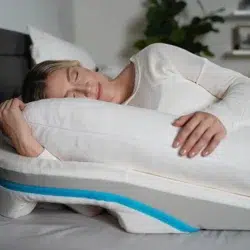 MedCline Pillow: Stunning Relief for Acid Reflux SufferersUpdated Aug 3, 2025
MedCline Pillow: Stunning Relief for Acid Reflux SufferersUpdated Aug 3, 2025Experience a transformative night’s sleep with the MedCline Pillow, specially crafted to combat acid reflux and provide ultimate comfort for side sleepers. With 95% …
-
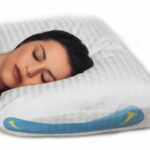 Mediflow Waterbase Pillow: Must-Have for Pain Relief!Updated Aug 3, 2025
Mediflow Waterbase Pillow: Must-Have for Pain Relief!Updated Aug 3, 2025Experience the ultimate in customizable comfort with the Mediflow Waterbase Pillow—perfect for easing neck pain and improving your sleep! With its unique water chamb…
-
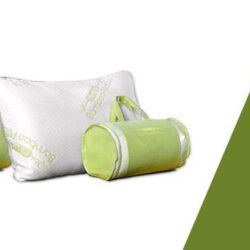 Miracle Bamboo Pillow: Stunning Comfort, Not Worth the HypeUpdated Aug 1, 2025
Miracle Bamboo Pillow: Stunning Comfort, Not Worth the HypeUpdated Aug 1, 2025Discover the Novosbed experience: a blend of premium materials, customizable comfort, and impressive durability at a price that won't break the bank. Say goodbye to sl…
-
 Nectar Pillow: Must-Have for Effortless Sleep ComfortUpdated Aug 1, 2025
Nectar Pillow: Must-Have for Effortless Sleep ComfortUpdated Aug 1, 2025Discover the ultimate in sleep comfort with the Nectar Pillow, featuring adjustable shredded memory foam and a breathable Tencel cover that keeps you cool all night! P…
-
 Oreous Pillow ReviewUpdated Jun 12, 2017
Oreous Pillow ReviewUpdated Jun 12, 2017I was recently given an Oreous pillow for review. The Oreous Pillow is one of the hottest pillows on kickstarter right now and so far has raised $329,059 as of June 3.…
-
 Pillow Cube: Stunning Side Sleeper Pillow for Pain ReliefUpdated Aug 2, 2025
Pillow Cube: Stunning Side Sleeper Pillow for Pain ReliefUpdated Aug 2, 2025Discover the Pillow Cube, the game-changing pillow designed exclusively for side sleepers! Say goodbye to neck and shoulder pain and enjoy a cooler, more supportive ni…
-
 Pillowtex Pillows: Stunning Value with Effortless ComfortUpdated Aug 1, 2025
Pillowtex Pillows: Stunning Value with Effortless ComfortUpdated Aug 1, 2025Curious if Pillowtex pillows are still worth it? Discover four compelling reasons why these cozy, adjustable options could be your perfect sleep solution!
-
 Pluto Pillow Review: Top 5 Must-Know Facts in 2024Updated Dec 19, 2025
Pluto Pillow Review: Top 5 Must-Know Facts in 2024Updated Dec 19, 2025Discover the ultimate sleep experience with the Pluto Pillow, uniquely tailored to fit your body and sleeping style — no more tossing and turning! With a 110-night r…
-
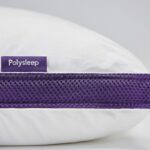 Polysleep Pillow: Best Hybrid Foam for Effortless ComfortUpdated Aug 2, 2025
Polysleep Pillow: Best Hybrid Foam for Effortless ComfortUpdated Aug 2, 2025Discover the Polysleep Pillow, a game-changer in customizable comfort with its innovative viscoelastic hybrid foam that adapts to your sleeping style—without the has…
-
 Proper Pillow Height Determines Your Best PillowUpdated Dec 19, 2025
Proper Pillow Height Determines Your Best PillowUpdated Dec 19, 2025Discovering the perfect pillow height tailored to your sleep position can transform your sleep experience! Whether you're a side, back, or stomach sleeper, understandi…
-
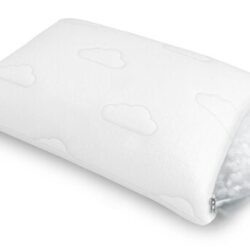 Puffy Pillow Review: Stunning Comfort with Reliable SupportUpdated Aug 2, 2025
Puffy Pillow Review: Stunning Comfort with Reliable SupportUpdated Aug 2, 2025Discover the Puffy Pillow, designed to adapt to your sleeping style while offering incredible support and a refreshing coolness all night long! Plus, every purchase he…
-
 PureCare One Pillow ReviewsUpdated Jun 8, 2016
PureCare One Pillow ReviewsUpdated Jun 8, 2016I have been testing the PureCare One Pillow line and have found these pillows to be very versatile. PureCare is a leader in the sleep products industry. They are th…
-
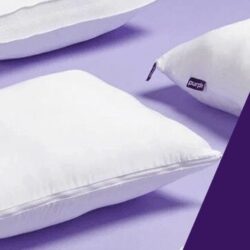 Purple Pillows: Stunning Option for Effortless Sleep ComfortUpdated Aug 2, 2025
Purple Pillows: Stunning Option for Effortless Sleep ComfortUpdated Aug 2, 2025Discover the ultimate in comfort with the Purple Cloud Pillow, designed to cradle your head and neck with its innovative Hyper-Elastic Polymer fill. Say goodbye to res…
-
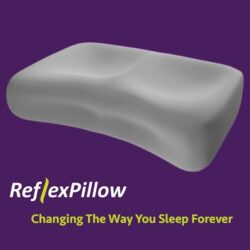 Reflex Pillow: The Best Solution for Pain-Free SleepUpdated Aug 2, 2025
Reflex Pillow: The Best Solution for Pain-Free SleepUpdated Aug 2, 2025Discover the Reflex Pillow—a game-changer for side sleepers seeking relief from neck and back pain! Designed by a specialist, this luxurious pillow offers superior s…
-
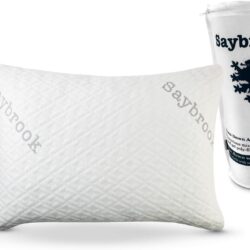 Saybrook Pillow Review – Adjustable Lion Down Pillow for Neck Pain ReliefUpdated Dec 19, 2025
Saybrook Pillow Review – Adjustable Lion Down Pillow for Neck Pain ReliefUpdated Dec 19, 2025Discover the Saybrook Pillow—a revolutionary sleep solution that seamlessly blends comfort, support, and eco-friendliness! With its adjustable loft and luxurious mat…
-
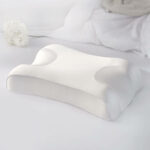 Sleep & Glow Pillow: Best Anti-Aging Secret Unveiled!Updated Aug 2, 2025
Sleep & Glow Pillow: Best Anti-Aging Secret Unveiled!Updated Aug 2, 2025Discover the Sleep & Glow Anti-Aging Pillow, designed to cradle your head and support your neck while reducing sleep wrinkles and improving skin elasticity—it's …
-
 Sleeper Scarf ReviewUpdated Jun 9, 2016
Sleeper Scarf ReviewUpdated Jun 9, 2016If you are a frequent traveler you know how important it is to have everything you need on hand and not have to be inconvenienced by digging through your luggage or ca…
-
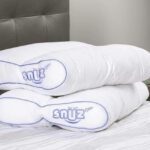 Snuz Pillow Review: Exclusive Comfort for Effortless SleepUpdated Aug 1, 2025
Snuz Pillow Review: Exclusive Comfort for Effortless SleepUpdated Aug 1, 2025Discover the Snuz Pillow, a game-changer for a restful night's sleep! With its innovative hourglass design, it perfectly aligns your neck and back, making it a must-tr…
-
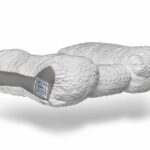 Spine Align Pillow Review: Must-Have for Neck Pain ReliefUpdated Aug 1, 2025
Spine Align Pillow Review: Must-Have for Neck Pain ReliefUpdated Aug 1, 2025If you're tired of waking up with neck pain, the Spine Align Pillow might just be your new best friend! With its ergonomic design and customizable support, it promises…
-
 Stunning Anime Body Pillows: Your Best Comfort SolutionUpdated Aug 2, 2025
Stunning Anime Body Pillows: Your Best Comfort SolutionUpdated Aug 2, 2025Discover the world of Dakimakura pillows, where comfort meets your favorite anime characters! Whether you're an avid fan or just looking to add a playful touch to your…
-
 Stunning Memory Foam Pillows: Best Picks for Pain ReliefUpdated Dec 24, 2025
Stunning Memory Foam Pillows: Best Picks for Pain ReliefUpdated Dec 24, 2025Discover the ultimate comfort with our top picks for memory foam pillows! From pain relief to temperature control, these expertly designed pillows will transform your …
-
 Stunning Sex Pillows: The Best Choices for Ultimate PleasureUpdated Aug 3, 2025
Stunning Sex Pillows: The Best Choices for Ultimate PleasureUpdated Aug 3, 2025Unlock new heights of pleasure and comfort in your bedroom with our ultimate guide to the 15 best sex pillows! These often-overlooked essentials transform your intimat…
-
 Sweetnight Pillow Review: Stunning Value for Best SleepUpdated Aug 2, 2025
Sweetnight Pillow Review: Stunning Value for Best SleepUpdated Aug 2, 2025Discover the comfort and support of Sweet Night's pillows—perfect for a restful night’s sleep without breaking the bank! With customizable heights and hypoallergen…
-
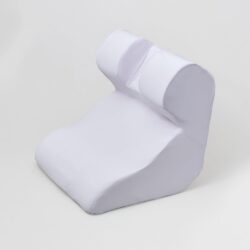 The Snorinator Review 2025 — Upright Anti-Snoring Pillow TestedUpdated Nov 1, 2025
The Snorinator Review 2025 — Upright Anti-Snoring Pillow TestedUpdated Nov 1, 2025The Snorinator Pillow Review 2025 — Real Results with and without CPAP | Yawnder Yawnder Review The Snorinator Upright Sleep Pillow — My Real-World Experience As s…
-
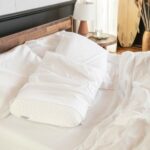 Tuft & Needle Pillow: Stunning Comfort with Risky SoftnessUpdated Aug 2, 2025
Tuft & Needle Pillow: Stunning Comfort with Risky SoftnessUpdated Aug 2, 2025Experience the ultimate in comfort and coolness with the Tuft & Needle Pillow, crafted from an eco-friendly blend of memory foam and latex that delivers soft suppo…
-
 YourFacePillow: Stunning Anti-Aging Solution for Clear SkinUpdated Aug 2, 2025
YourFacePillow: Stunning Anti-Aging Solution for Clear SkinUpdated Aug 2, 2025Transform your sleep routine with the YourFacePillow, designed to minimize skin contact for clearer, healthier skin while helping you master the art of back sleeping! …
Pillow Material Guides
Not sure what's inside? Here is a quick breakdown.
Memory Foam
The most popular choice for pain relief. It molds to your neck shape. Look for Shredded Memory Foam if you want to adjust the height yourself.
Latex Pillows
Natural, bouncy, and cooler than foam. Latex pushes back against your head instantly. Great if you hate the "stuck" feeling of foam.
Down & Alternative
The classic "hotel feel." Soft, squishy, and malleable. Real down lasts longer, but "Down Alt" (polyester) is hypoallergenic and cheaper.
Specialty (Cooling/Wedge)
Phase Change Material (PCM) pillows feel icy to the touch. Wedge pillows are essential for acid reflux or snoring.
Quick tips
- Solid Foam vs. Shredded: Solid is stable; Shredded is breathable and moldable.
- Cooling: If you sleep hot, avoid solid memory foam unless it has active cooling gel.
- Washability: Most shredded foam pillows have washable covers, but you can't wash the foam itself.
Best pillow for your position
Your sleep position dictates the "Loft" (height) you need to keep your spine straight.
Side Sleepers
Needs: High Loft. You have a large gap between your shoulder and ear. You need a thick, firm pillow to fill it.
Back Sleepers
Needs: Medium Loft. You need just enough support to cradle the neck curve (cervical spine) without pushing your chin to your chest.
Stomach Sleepers
Needs: Low/Ultra-Low Loft. You need a very thin pillow (or no pillow) to prevent your neck from arching backward.
Frequently asked questions
How often should I replace my pillow?
Much more often than your mattress! Replace poly-fill pillows every 1-2 years. Quality memory foam or latex can last 3-5 years. If you fold it in half and it doesn't spring back, it's dead.
Can I wash my pillow?
Usually, no. You can wash the case, but putting a memory foam block in the washer will ruin it. Down Alternative pillows are the exception; most can be machine washed.
Why do I wake up with neck pain?
Your pillow is likely the wrong height. If your neck cricks upward, the pillow is too high. If it hangs down, it's too low. Try an adjustable loft pillow to find your exact height.
Do cooling pillows actually work?
Yes, but mostly for the first 20 minutes (falling asleep). Phase Change Material absorbs heat initially, but eventually, it warms up. Airflow (latex/shredded fill) is better for all-night cooling.

